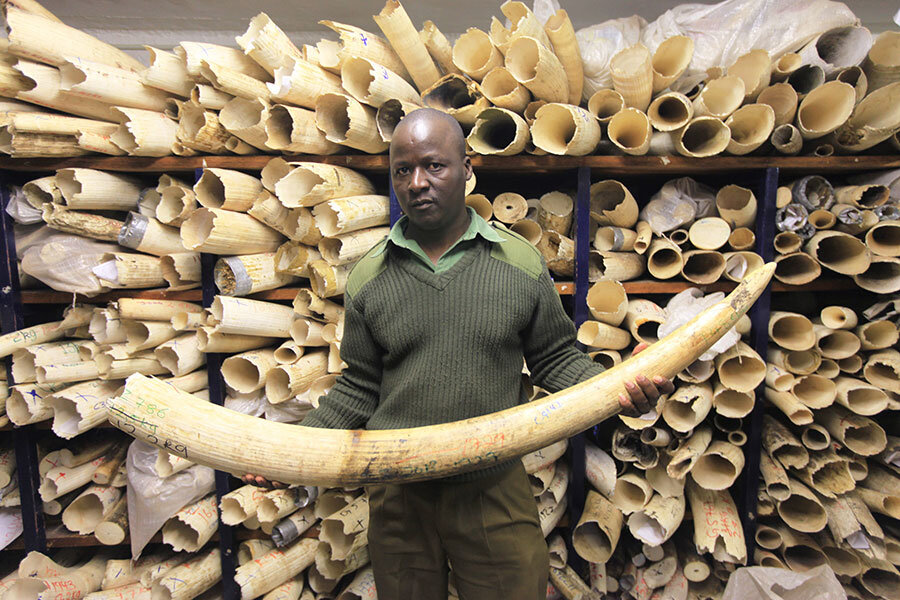Why the UN opposes stronger elephant protections
Loading...
The Convention on International Trade in Endangered Species of Wild Flora and Fauna (CITES), which meets in Johannesburg, South African, over the next two weeks, will address dozens of proposals to regulate trade for given species. But there is one proposal that officials surprisingly hope won’t be adopted: increasing the protections for elephants across the African continent.
Currently, elephants have an Appendix I status across most of Africa, meaning that any commercial trade in the species, whether whole or in parts, is banned. The exception are the southern African countries – South Africa, Namibia, and Zimbabwe – where elephants are more populous. In these countries, elephants’ Appendix II status means that non-commercial trade for hunting purposes is allowed. Live animals can also be traded to “appropriate and acceptable destinations.”
Trading ivory, however, is banned completely.
In the face of declining populations, a number of countries, including Burkina Faso, Ethiopia, Nigeria, and Uganda, are calling for an upgrade that would give elephants the same status across Africa. This is supported by Botswana but rejected by the other southern African states, who say that higher numbers of elephants and lower levels of poaching in their countries justify the differences in status. South Africa has even seen a growth in its elephant numbers because of careful management.
For CITES, it’s a question of maintaining unity and ensuring the best possible protections for all elephants. They worry that countries that object to Appendix I status will reject the Convention’s elephant-related provisions.
“There are 90 days for any country to enter a reservation against that decision, that listing to Appendix I. If they enter a reservation, the Convention doesn’t apply to them for the particular species,” CITES executive secretary John Scanlon told the BBC.
He went on to explain that, if multiple countries reject the elephant-related provisions, they can trade with each other outside the terms set up by CITES. This raises concerns for the Convention: It would leave elephants in southern Africa more open to potential trade-related threats, including the trade in ivory.
Namibia, Zimbabwe, and South Africa have all expressed an interest in trading in ivory, which they say is important for their economies and for conservation efforts. When CITES last allowed a one-off sale of ivory, in 2009, the sale of 102 tons of ivory – which these countries had stockpiled – brought back $15.4 million for elephant conservation. However, with China, the world’s largest ivory consumer and a key buyer in that trade, planning to close its domestic ivory market, there may be questions about the possibility of selling even outside the scope of the CITES treaty.
One concern is that the legal trade in ivory may “[create] a smoke screen for an illegal trade to flourish across the whole of the rest of the continent,” Frank Pope, operations manager at Save the Elephants, a Kenya-based group, told the Associated Press. He supports the upgrade to Appendix I status.
The president of Botswana expressed similar thoughts. Ian Khama told Reuters that he would not want to support any act that would encourage illegal trade and mean “other countries that are struggling with their populations are going to suffer.” Botswana is home to the most elephants of any country in Africa, with a population that fluctuates between 150,000 and 200,000 as the elephants cross into bordering countries.
CITES is currently in force in 183 countries worldwide.
This report contains material from Reuters and the Associated Press.








